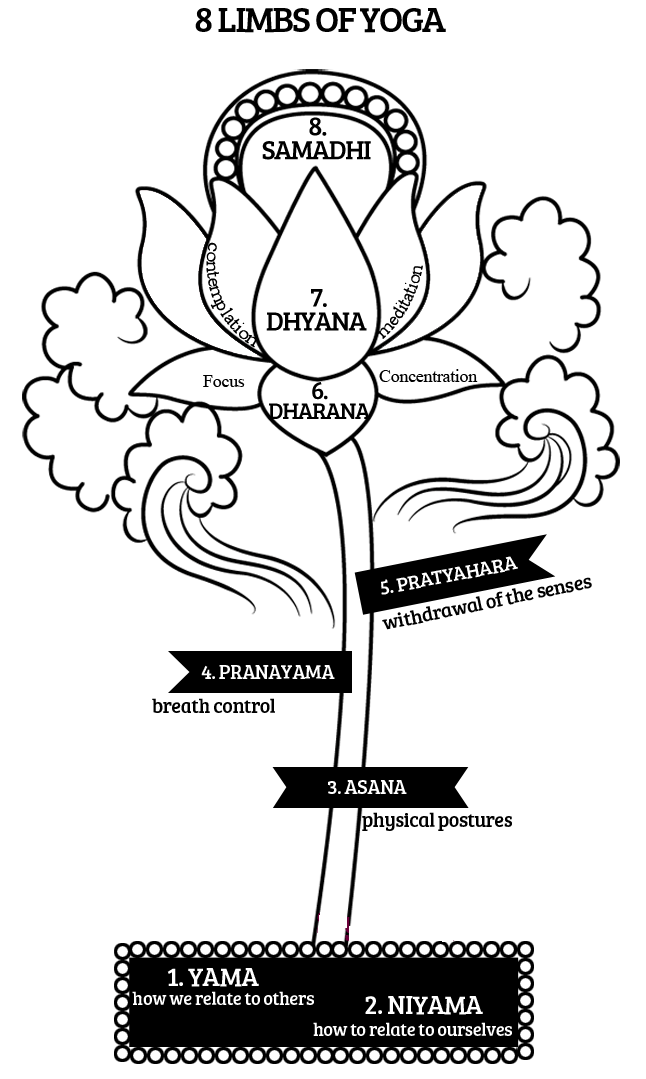Positive Charging through Dharana and Dhyana
- October 29, 2018
- Posted by: admin
- Category: Featured Content,

By Dr Chandra Nanthakumar
Research has shown that the human brain processes approximately 12,000 to 60,000 thoughts a day. What is shocking is that 80 per cent of these thoughts are negative (Faith, Hope & Psychology, 2012). Even more appalling is the fact that 95 per cent are repetitive thoughts of the previous day. The internal as much as the external dialogues in the mind bring about adverse effects on the blood pressure and heart rates. This goes to show how our body responds to our thoughts and feelings as a result of the mind-body-spirit connection.
If this “behaviour” goes unchecked, dis-eases will start to lurk in every nook and corner of the human anatomy and this will mark the beginning of an unwarranted lifestyle change. Recurring visits to the doctor may cause a hole in the pocket and one has to be prepared to kick start a whole array of medication, which in turn, may bring about adverse effects to the biological system. For instance, certain medications like statins and steroids are known to cause lethargy and weight gain, respectively.
From the yogic philosophy, human beings are unhappy or unhealthy due to non-alignment of the physical, mental and pranic (i.e. energy) bodies.
Concerted effort is needed to align these three components. As complex as it may sound, it is doable through meditative movements like yoga. What one needs is time and the discipline to practice.
Dharana & Dhyana, Their differences
If one embraces the path of dharana (concentration) and dhyana (meditation), one would be able to not only keep dis-eases at bay but also experience greater heights of joy and bliss. Dharana and dhyana are two of the eight rungs of yoga as stated by Patanjali. The eight rungs are yama (universal ethics), niyama (individual ethics), asana (postures), pranayama (expansion of life force), prathyahara (sense withdrawal), dharana (concentration), dhyana (meditation) and Samadhi (blissful state).
It is normal for individuals to practise asanas to improve the flow of prana (energy), followed by pranayama to balance the energy in the body and mind. Shavasana, the relaxation pose, lulls the body into a state of prathyahara. This prepares the body for the next two stages that is dharana and dhyana.
Dharana and dhyana may appear similar, but there is a subtle difference between the two. While dharana is about fixing the mind on a specific point, dhyana brings about keen awareness without focus. In dharana, the specific point may be an internal or an external object. Hence, it may range from, for instance, the anahata chakra (internal) to a stalk of rose (external). The importance of the practice does not lie in the object of concentration, but in the concentration itself. It is the concentration that helps quieten the mind.

When the mind is deeply focused on a particular object, all other thoughts will cease to appear.
The focus on that particular object becomes so serene and peaceful that the mind gradually becomes calmer, clearer and more centred. At this point, there would hardly be any room for negativity. The next paragraph provides a simple description of a dharana practice. It is simple enough for all and sundry to follow.

A Simple Dharana Practice
In order to commence the practice, one sits in a comfortable position. It is perfectly fine to be seated on a chair if one has difficulty sitting in a cross-legged pose on the floor. The eyes are closed and the awareness is brought to a particular point, for example, to the tip of the nose. For the next five minutes or so, the focus is on the incoming and outgoing breath. Other thoughts may appear, but the practitioner merely has to bring back the awareness to the tip of the nose and the area surrounding it. The duration of the practice may be increased with time. The practitioner will soon experience a sense of peace within. As the practice deepens, one becomes more aware of the mind.
Meditation, on the other hand, is the practice of observing without judgement or attachment. This word is derived from two Latin words, i.e. meditari (to dwell upon and exercise the mind) and mederi (to heal). It is essential to note that meditation is not about emptying the mind, and neither is it about letting the thoughts wander. Essentially, it is about paying attention to the present moment; it is about being aware of one’s own thoughts, emotions and sensations (Gelles, n.d.).
As stated by Patanjali in Yoga Sutra: “Tatra pratyaya ektanata dhyanam”. It simply means that meditation is a steady flow of attention towards the same region or point.
It has been proven scientifically that during meditation, oxygen consumption drops drastically (EOC Institute, 2018). In 10 minutes, it plummets by approximately 20 percent. When this happens, the body will be lulled into a restful state. The heart beat becomes slow and the brain starts emitting alpha and theta waves. At this point, the mind is free from unwanted thoughts; in other words, the mind is very positive. A simple meditation practice is included in the following paragraph.

A Simple Dhyana Practice
This practice is called the walking meditation as it requires the practitioner to walk. First and foremost, the practitioner needs to find a space and start walking at a medium pace while focusing on the feet. The space may be inside or outside the house. As one walks, the awareness is brought to the heels as the feet touch the ground. The awareness is then brought to the toes as they hit the ground. Be aware of the moment when the feet are completely on the ground. Continue to observe all these for about five to ten minutes. The duration may be increased as time goes by. During the practice, there is a likelihood that the mind may wander. All you have to do is gently bring your attention back to your feet.
This practice helps you build or enhance your concentration skill. Whenever negative thoughts penetrate the mind, this practice has the ability to help the practitioner discern and bring the mind back to a present state of calmness and centredness (Adapted from McMullen, 2013). In short, the practices of concentration and meditation are priceless medication for the body and mind. Both the practices merely require one ingredient — time.
References:
- EOC Institute (2018). How Meditation Increases VO2 Max, Lowers Oxygen Consumption …
https://eocinstitute.org/meditation/meditation-lowers-your-oxygen-consumption/ - Faith, hope & Psychology (12 March 2012). 80 % of Thoughts Are Negative…95 % are repetitive, The Miracle Zone. Retrieved from https://faithhopeandpsychology.wordpress.com/2012/03/02/80-of-thoughts-are-negative-95-are-repetitive/
- Gelles, D. (n.d.). How to meditate. Retrieved from https://www.nytimes.com/guides/well/how-to-meditate
- McMullen, L. (2013). 3 meditation techniques for beginners. Retrieved from https://www.huffingtonpost.com/2013/08/09/meditation-for-beginners_n_3683131.html
